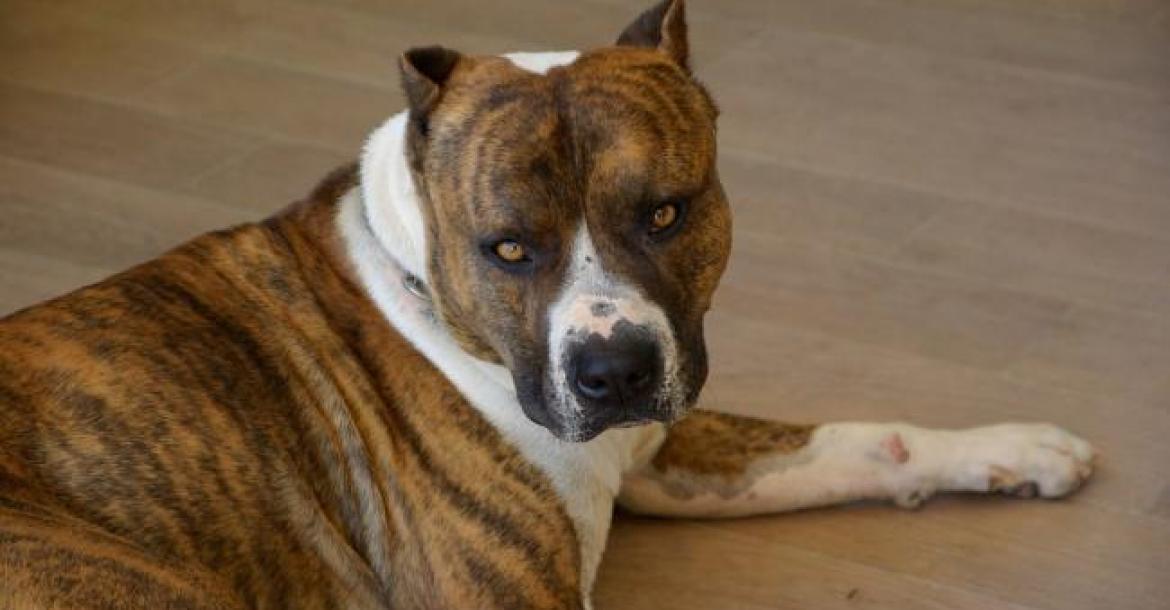Powerbreeds: the Spanish rules
In many EU countries the law provides rules for so-called “high risk dogs”, aka powerbreeds. Anyone thinking his or her country has strict rules may want to look abroad to realize it may not be so bad after all. For example Spain is taking care of these dogs with fairly harsh rules.
In Spain dogs like this are called “perro potencialmente peligroso”, a potentially dangerous dog. It is abbreviated to ppp.
The Spanish rules may be about the dogs, but the owners are the ones that have to comply with it. Regulations are about the owners.
Spanish law says in the chapter “Legal supplies for the owners of potentially dangerous dogs” a license to keep a potentially dangerous dog is mandatory.
This license has to be applied for in the municipality of the owner and it has a set of rules that have to be met.
These rules say:
- One has to be an adult (over 18 years of age)
- One does not have committed criminal offenses or have a criminal record
- One has to have a certificate of physical health / capacity and a certificate of mental fitness
- One has to have insurance for legal liability for pets with a coverage of no less than 120,000 euros
- These certificates have a validity of 5 years and will be issued by the owner. After it expiration of these 5 years the license must be extended by the owner.
The mentioned certificates are interesting, because that is a rather uncommon demand for keeping a pet.
Let’s take a look at the certificate for physical fitness. The owners has to be able to give proper care, and demands for this are:
- Good eyesight
- Good hearing
- Good musculoskeletal system
- No neurological disorders
- No motor disorders
- No other physical disorders other than those mentioned above that cause a physical inability to handle and care for a PPP.
We are talking a complete physical test that may be a bit like the demands for a driver’s license, or a hunting license.
And owning a ppp is seen exactly as such: one owns a potentially lethal weapon.
Then there is the certificate for psychological health.
This is issued as soon as the necessary tests have been carried out to show that there is no psychological incapacity that can influence judgement. That seems a bit vague, but it is specified:
- No mental or behavioral disorders
- No psychological limitations in the area of evaluation, judgment and decision-making as a result
- No other condition beyond the aforementioned that could limit the ability to handle a ppp.
These tests are taken by specialist doctors and the results must be archived by the municipalities so that they can be traced back to them. The costs are of course for the interested party, ie the potential owner of the PPP.
The holder has to carry the certificate with him and in public areas ppp’s must always be muzzled.
The dogs must never run free and also on their own property they should be on a leash unless they are kept in a kennel. In the public space the leash may be up to two meters long at most.
If the PPP is stolen, declaration of theft is required within 48 hours. If these rules are met, the dog must be registered in the municipal register for potentially dangerous dogs. This must be done within a period of no more than 15 days after obtaining the licence.
The following must be mentioned in the register:
- The data of the owner
- The dog's data so that identification is possible
- The normal residence of the animal and for which it is used, e.g. pet, assistance dog, guard dog
A description by the owner of incidents caused by his animal, as well as every sale, relocation, loss, robbery or change of owner. This must be done within 48 hours after the incident to happen.
If the dog stays in a different municipality other than the permanent residence for more than 3 months the dog must be registered in the register of that municipality. Think of, for example, winter visitors, who often stay in in different regions for longer periods of time.
In the royal decree 287/2002 a number of mandatory safety measures are introduced. These are established for the moments the dog is present at public roads / places. Failure to comply with that measure can lead to sanction. Those rules are:
- The owner must always carry the permit
- The dog must always wear a muzzle and must be on a leash of no more than two meters
- A person is not allowed to walk more than one potentially dangerous dog at a time
- If the dog stays at a farm, country house, house, plot, terrace or garden or any other not delimited / fenced place, the dogmust be on a leash
- All potentially dangerous dogs must be mirochipped
Quite a series of obligations, let’s look at the sanctions. Well, those are not mild and divided into categories.
1. The following are considered a very serious offense:
a) The abandonment / dumping of a PPP of any kind with the understanding that this applies to the abandonment / dumping of both identifiable animals and non-identifiable animals by means of descent or owner.
b) Having ppp without a license
c) Sell or relocate to a person without a license
d) Training dogs to increase their aggressiveness or to target the animals for competitions
e) Training ppp by a person without a certificate of ability
f) Organizing or conducting competitions, exercises, demonstrations or representations of ppp or their participation there in order to show the aggressiveness of the animals
2. Serious violations
a) Letting a PPP run free or not taking the necessary measures to prevent an animal from escaping
b) Failure to comply with the obligation to chip the animal
c) Not registering in the register
d) Being with a PPP in a public space without a muzzle or without leash.
e) Transporting a PPP without adequate safety measures
f) Refusing or not cooperating in providing data or making it available information to the competent authorities or their agents accordance with the law, as well as providing incorrect, incomplete or false documents.
3. The above-mentioned violations could lead to sanctions as confiscation, indictment, sterilization or putting down the potentially dangerous dog, closing the company of its owner, and the temporary or definite suspension of the license for holding potentially dangerous dog or the certificate of ability.
4. Mild violations
- Infringements not mentioned in art 1, 2 or 3
5. The violations mentioned in the previous nos. 1, 2 and 3 will be punished with the following fines.
- Mild violations of 150.25 to 300.51 euros
- Serious violations of 300.52 to 2404.05 euros
- Very serious violations of 2404.06 to 15.025.30 euros
6. These amounts can be periodically reviewed by the legislator
These are not mild sanctions. So what breeds are we dealing with here?
The legislator mentions:
- a) Pit Bull Terrier.
- b) Staffordshire Bull Terrier.
- c) American Staffordshire Terrier.
- d) Rottweiler.
- e) Dogo Argentino.
- f) Fila Brasileiro.
- g) Tosa Inu.
- h) Akita Inu.
But the rules apply beyond this: the Netherlands mention the exception of pedigree dogs, that exception is not known in Spain. The Spanish law is very plain in this matter: animals that are not of the mentioned breeds but do meet all or most of the characteristics are also covered by this law. And those characteristics are:
- All dogs with a powerful, robust appearance and highly developed muscles, an athletic build and strength and endurance
- Characteristic temperament and a high market value
- Short-haired
- Breast circumference between 60 and 80 cm, height at withers between 50 and 70 cm and weight over 20 kg
- Large, rectangular head with wide skull and strongly developed cheek and jaw muscles, large and strong jaws and large and powerful mouth
- Broad, muscular and short neck
- Broad and muscular chest, with well-developed ribs and a muscular body
- Parallel, powerful and muscular front legs and very muscular hind legs.





